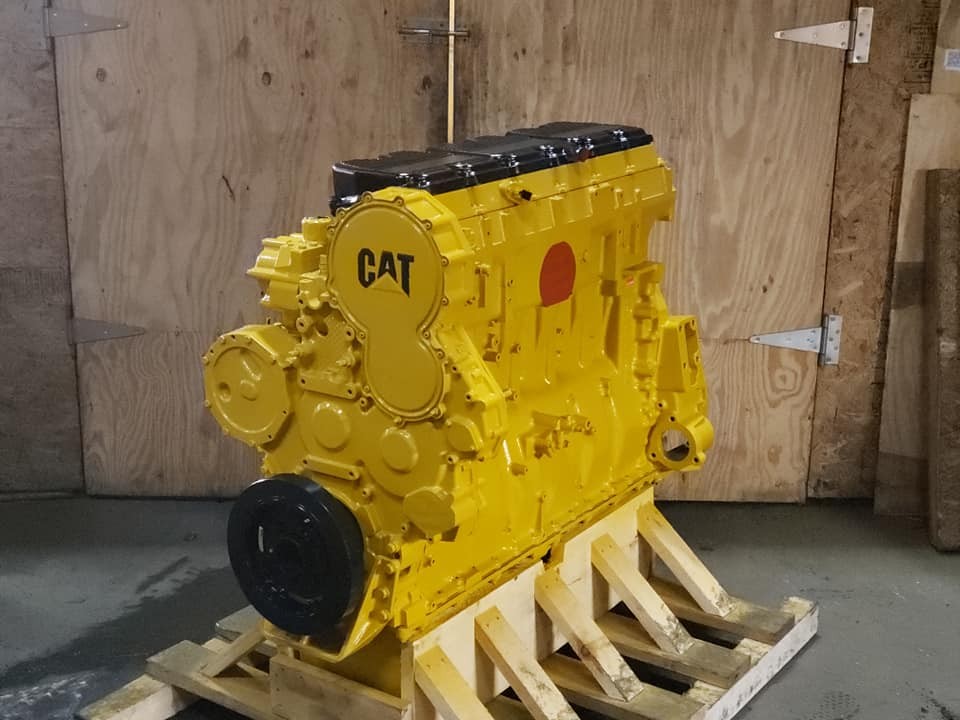The Caterpillar C15 Motor stands as a legend in the heavy-duty diesel engine world. Renowned for its power, reliability, fuel efficiency, and versatility, the C15 remains a top choice for fleets and owner-operators alike. This article delves into the history, features, and variations of the Caterpillar C15, exploring why it continues to be a dominant force in various industries.
The Caterpillar C15: A History of Power and Reliability
First introduced in 1998 by Caterpillar Inc., the C15 single turbo engine quickly gained popularity across diverse applications, including construction, agriculture, marine, power generation, and water pumping. Its robust design, coupled with high-quality materials and components, contributes to its exceptional durability and longevity.
 Illustrating the block of a Caterpillar C15 diesel engine.
Illustrating the block of a Caterpillar C15 diesel engine.
Caterpillar’s rigorous testing and real-world performance have demonstrated that a well-maintained C15 engine can often exceed a million-mile lifespan. The engine’s high-strength connecting rods and robust crankshaft minimize wear and tear, ensuring long-lasting performance and reducing the risk of premature bearing failure.
Fuel Efficiency and Design Innovations
Beyond its durability, the Caterpillar C15 excels in fuel efficiency. Features like its advanced fuel system and efficient combustion process contribute to lower fuel consumption, minimizing operating costs for businesses and operators.
The C15 built upon the foundation of its predecessor, the 3406E, addressing previous shortcomings and incorporating key improvements. A higher-volume oil pump and water pump enhance lubrication and cooling, while upgraded gaskets and seals minimize leaks, common issues in earlier models.
Caterpillar C15 Engine Variations: From 6NZ to ACERT
The C15’s evolution includes several notable variations:
The 6NZ: The Original Workhorse
The 6NZ, launched in 1998, marked the beginning of the C15 legacy. This highly sought-after engine, known for its reliability and longevity, solidified Caterpillar’s reputation in the heavy-duty diesel market.
The MBN: Bridging the Gap
The MBN, introduced in 2001, served as a transitional model between the pre-emissions 6NZ and the twin-turbo ACERT engines. Initially plagued by performance issues, the MBN gained popularity once ECM reprogramming solutions emerged.
The ACERT Era: Meeting Emission Standards
The ACERT (Advanced Combustion Emissions Reduction Technology) engines, introduced in 2003, marked a significant shift to meet stricter EPA emission regulations. These twin-turbo models featured several variations, including the BXS, MXS, NXS, and SDP.
The MXS, the most prevalent ACERT variant, incorporated a combined engine brake and variable valve actuator housing. The SDP, the final C15 iteration, included a Diesel Particulate Filter (DPF) system and redesigned turbochargers with ball bearings.
The Caterpillar C15’s Enduring Legacy
The Caterpillar C15 motor remains a powerful and reliable engine choice across various industries. Its robust design, fuel efficiency, and adaptability have cemented its place as a leader in the heavy-duty diesel market. While production of the C15 ended in 2009, its enduring legacy continues to influence modern engine technology.

